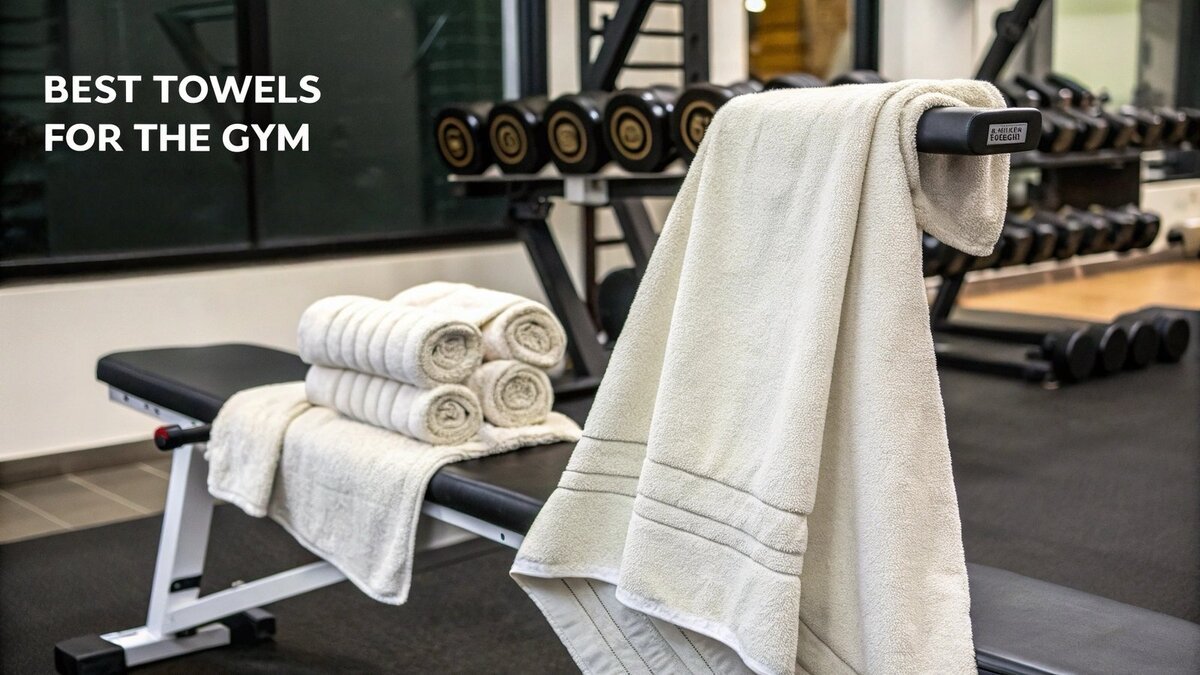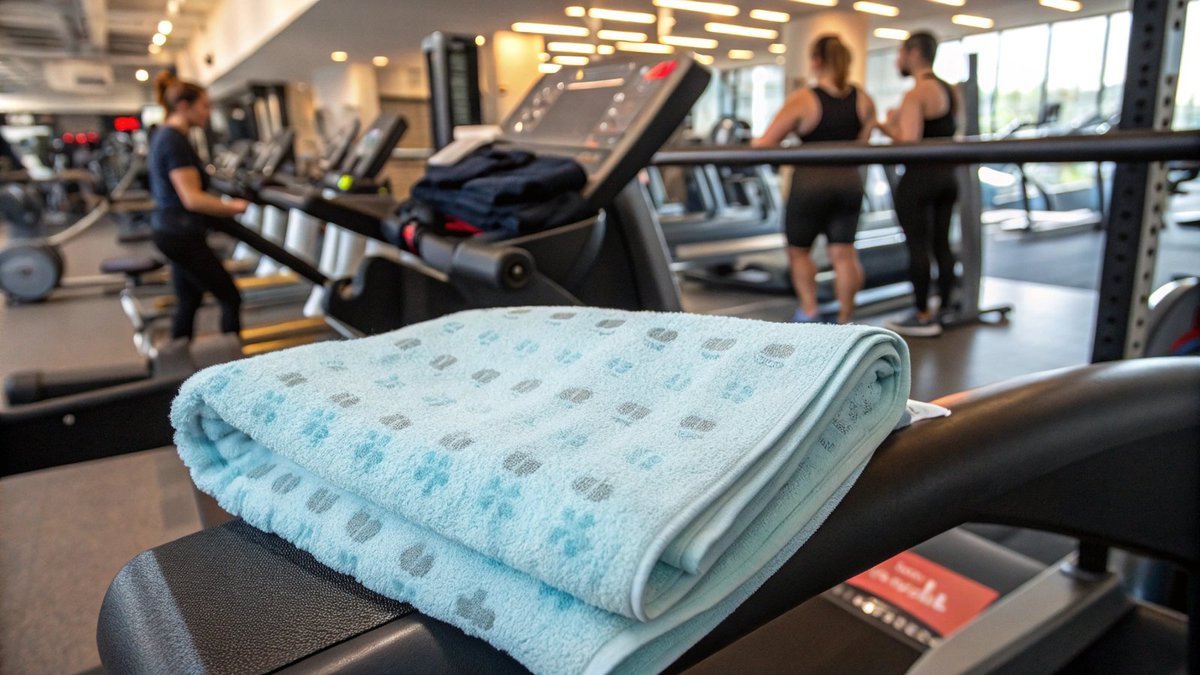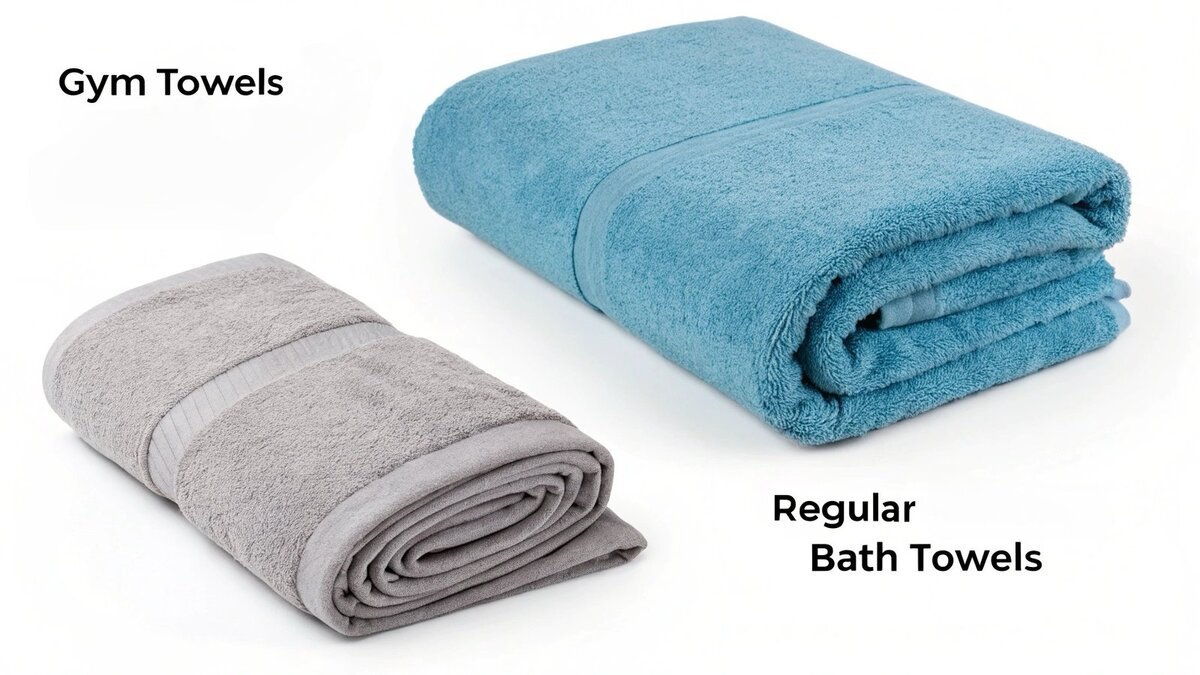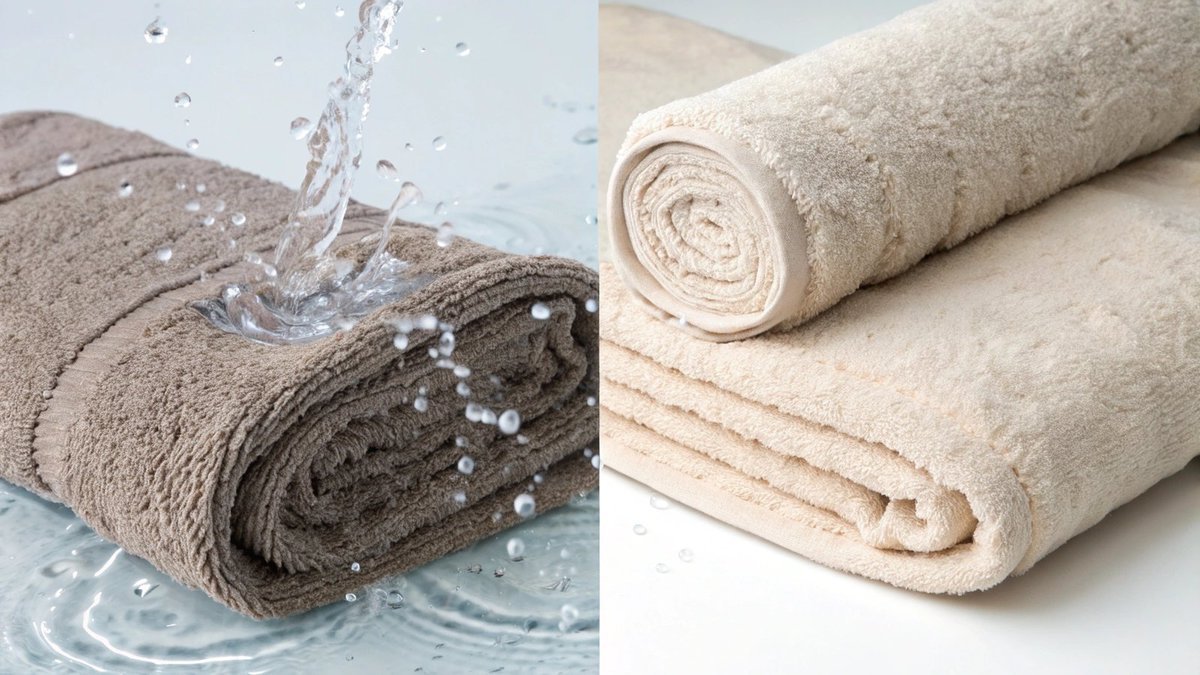Struggling with a bulky, damp towel in your gym bag? It’s frustrating when your towel stays smelly and heavy. The right choice makes your workout cleaner and more convenient.
To choose the right gym towel, you need to focus on three things: material, size, and absorbency. Microfiber or quick-drying cotton blends are usually best. They are lightweight, soak up sweat well, and have properties that fight bacteria. Pick a towel that matches your workout style.
Choosing a gym towel might seem like a small detail, but it makes a big difference in your workout experience. It’s not just about drying sweat; it’s about hygiene, safety, and even gym etiquette. As someone who has spent years in the textile industry, I’ve seen how the right fabric technology can completely change a product’s performance. Let’s dig into the specifics so you can pick the perfect towel for your needs. We’ll cover what makes a great gym towel and how it differs from the one you use at home.
What kind of towel is best for the gym?
Tired of your gym towel feeling heavy and staying damp for hours? A wet towel in your bag smells bad and is inconvenient. The best gym towels are designed for performance.
The best towels for the gym are made from microfiber or special quick-drying cotton. These materials are light, soak up a lot of sweat, and often have antibacterial features. This means they dry fast, stay fresh, and are perfect for any workout.
When I help brands develop their towel lines, the conversation always starts with the end use. For a gym, performance is everything. You need a towel that works as hard as you do. This comes down to a few key features that separate a great gym towel from a standard one.
Material Matters Most
The fabric is the most important factor.
- Microfiber: This synthetic material, usually a blend of polyester and polyamide, is a top choice. Its fibers are incredibly fine, which gives it a huge surface area. This allows it to absorb up to seven times its weight in water. It also dries incredibly fast, which prevents mildew and bad odors from developing in your gym bag.
- Quick-Dry Cotton: Not all cotton is slow to dry. Modern weaving techniques, like a waffle weave or a low-twist terry loop, create cotton towels that are more absorbent and dry faster than traditional ones. These offer the natural, soft feel of cotton with improved performance.
Size and Portability
A gym towel shouldn’t be the same size as your bath towel. A smaller size, around 16×30 inches (40×76 cm), is perfect for draping over a bench or wiping your face and hands. It’s large enough to provide a hygienic barrier but small enough to not get in your way. It should also be lightweight and fold down compactly to save space in your bag. Many of our clients at TowelTrend request a built-in hanging loop, a small feature that makes a huge difference for drying the towel at the gym or at home.
What’s the point of a gym towel?
Have you ever walked up to a piece of gym equipment and found it covered in someone else’s sweat? It’s gross and unhygienic. A gym towel is your simple solution.
A gym towel is mainly for hygiene. It acts as a barrier between you and shared machines, stopping the spread of germs. It also keeps you safe by helping you dry sweaty hands for a better grip and keeps the gym clean for others.
In my years working with hotels and fitness centers, I’ve learned that providing towels isn’t just a luxury—it’s a critical part of maintaining a healthy environment. For your personal use, bringing your own towel is even more important. It serves three main purposes that go beyond just wiping away sweat.
Your Personal Hygiene Shield
Gyms are public spaces, and equipment is shared by many people. Sweat can transfer bacteria and fungi. Placing your towel on benches, mats, and machine backrests creates a clean, personal barrier. This simple step significantly reduces your exposure to germs that can cause skin infections or other illnesses. It’s your first line of defense in a shared space.
Safety and Performance
Sweat isn’t just uncomfortable; it can be dangerous. Sweaty hands can lose their grip on dumbbells, barbells, or pull-up bars, leading to accidents. Using your towel to keep your hands and face dry ensures you can hold weights securely and see clearly. A dry grip is a safe grip, and it allows you to focus on your form instead of worrying about equipment slipping.
Common Courtesy and Gym Etiquette
Using a gym towel is also about respecting the community. Wiping down equipment after you use it is standard gym etiquette. Having your own towel makes this easy. It shows consideration for the next person and helps maintain a clean, welcoming environment for everyone. It’s a small act that contributes to a better experience for the entire gym.
Are gym towels the same as regular towels?
Ever tried using your fluffy bath towel at the gym? It’s big, heavy, and takes forever to dry in your locker. It just doesn’t work. The right tool for the job matters.
No, gym towels and regular towels are not the same. Gym towels are made to be small, absorbent, and fast-drying for workouts. Regular bath towels are larger and plusher, designed for comfort and drying your whole body after a shower, not for portability.
When we manufacture towels at TowelTrend, the specifications for a gym towel are completely different from those for a luxury bath towel. They are engineered for different worlds. One is built for utility and performance under stress, while the other is built for comfort and relaxation. Thinking they are interchangeable is a common mistake. Let’s break down the key differences.
| Feature | Gym Towel | Regular (Bath) Towel |
|---|---|---|
| Primary Goal | Absorb sweat, dry quickly, be portable | Provide comfort, absorb water, full-body coverage |
| Material | Microfiber, quick-dry cotton blends | Plush cotton, bamboo, modal blends |
| Size | Small & compact (e.g., 16×30 in) | Large (e.g., 27×54 in or bigger) |
| Weight | Lightweight, easy to carry | Heavier and bulkier |
| Drying Time | Very fast | Slow |
| Durability | High; withstands frequent, harsh washing | High; designed to retain softness over time |
A gym towel’s durability comes from its ability to handle being washed in hot water frequently to kill germs, without falling apart. A bath towel’s durability is more about keeping its soft, fluffy feel after many washes. The yarns and weaves we use are chosen specifically for these outcomes. Using a bath towel at the gym is not only impractical due to its size and slow drying time, but it will also wear out differently and fail to meet your needs during a workout.
Is microfiber or cotton better for gym towels?
Stuck choosing between a microfiber and cotton gym towel? It’s a common dilemma, as each material offers very different benefits. You want the best performance but don’t know which to pick.
It depends on what you value most. Microfiber is better if you need a towel that is super absorbent, dries very quickly, and is easy to pack. Cotton is better if you prefer a natural, soft feel on your skin, but it will be heavier and slower to dry.
This is a question I get all the time from brands trying to decide on their product line. The "better" choice really comes down to personal preference and specific needs. Both materials have clear advantages and disadvantages for a gym setting.
The Case for Microfiber
Microfiber is a marvel of textile engineering. Its ultra-fine synthetic fibers are split to create an enormous surface area, making them incredibly effective at trapping moisture and dirt.
- Pros: It’s extremely absorbent, lightweight, and packs down to a tiny size. Its standout feature is its ability to dry in a fraction of the time it takes cotton. This is a huge plus for preventing that dreaded damp-towel smell.
- Cons: Some people don’t like its "grippy" or "clingy" feel on the skin. Because it’s a synthetic material made from plastics, there are also environmental concerns about microplastic shedding during washing.
The Case for Cotton
Cotton is a classic for a reason. It’s a natural fiber known for its softness and breathability.
- Pros: It feels soft and natural against the skin, which is great for people with sensitive skin. It’s highly absorbent in a different way than microfiber, feeling more plush as it soaks up water.
- Cons: Its biggest downfall is its drying time. A wet cotton towel is heavy and can easily start to smell if left in a gym bag for too long. It’s also much bulkier than microfiber. However, as I mentioned earlier, new cotton weaves are changing the game, but a standard cotton terry towel is not ideal for the gym.
In humid climates, microfiber is often the clear winner because it resists mildew. In colder places, some people prefer the cozy feel of cotton. Ultimately, if your priority is pure performance, speed, and portability, microfiber is hard to beat. If you prioritize a natural feel above all else, a modern, quick-dry cotton towel is your best bet.
Conclusion
Choosing the right gym towel is easy when you focus on your needs. Pick a material and size that prioritize hygiene, quick-drying performance, and portability to improve every workout.











